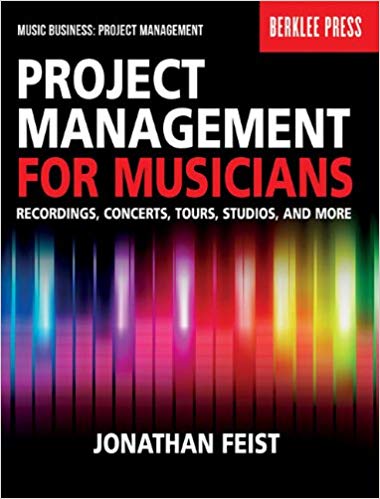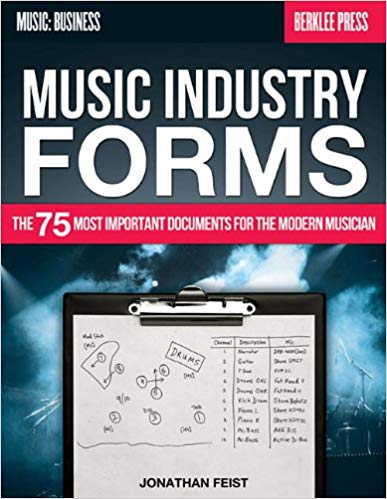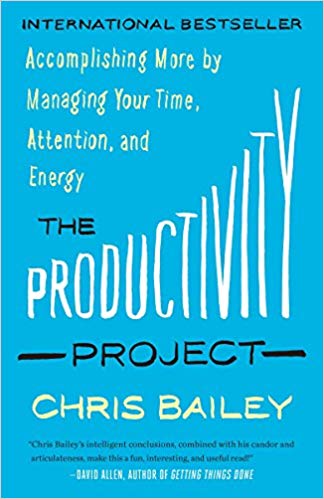Project Lists: Seeing the Big Picture
For the past couple years, I’ve been leading workshops and teaching Berklee Online courses about project management, aimed mostly at those working in the music industry. A trend I’m finding among my students is that many of them arrive at my doorstep feeling overwhelmed by the complexity of their work. They have so many concerts, recordings, teaching responsibilities, gigs, and other endeavors in their lives that they feel it is all out of control.
What seems to be my most useful recommendation is having them create a form called a “project list.” You’ll see variations of it, but to me, the essential points of information to include for each project are these, arranged in a simple chart:
| Project Name | Current Status/ Recent Progress | Next Action | Completion Date |
|---|---|---|---|
To create your own project list, start by brainstorming the names of all the projects in your life. Make a complete master list, including:
- Projects in progress
- Projects you plan to begin
- Projects that are mostly done except a few lingering details
- Projects for your profession
- Projects at home
- Projects for your hobbies
- Projects related to community service
- Projects you are leading
- Projects you are helping someone else with
- Any other projects you can think of
Get them all out of your head and into this project list. Anything that “ends in a product, system, or result” is fair game to put on this list. If you like, you can make separate lists for your work and for your personal life. When I’m at work, I want to focus on, say, editing books, without being distracted by, say, assembling beekeeping equipment. And vice versa. But getting too fragmented can make actually using the lists awkward, though, so keep them to as few lists as you can. Up to about three project lists is probably about right.
Then, review your list(s), and consider whether your intentions are actually possible, given the realities of time, space, resources, and physics.
When I first did this exercise in 2005, my list included over 300 projects! The seminar leader who had me do this “mind dump” had promised that I would feel a rush of relief after writing them all down, but my first reaction was one of anxiety. For the first time, I realized that what I hoped to accomplish in life was actually unfeasible. For example, I knew that I really wanted to record an album of my original songs. But my list was junked up with projects like “build a rowboat out of plywood” and “fix the five broken wheelbarrows I brought home from the dump.” The clutter was making the important projects impossible.
The next step, though, did finally bring me some peace of mind: prioritizing the projects, and letting go of the bad ones. So, when you’ve got your master/monster list, put them in order of most important to least important.
Once they are prioritized, see if there are any ridiculous low-priority projects that you’d be best off terminating. Either delete them out or move them to a separate “Back Burner Projects” list, which you can peruse when you’ve got some free time, and perhaps bring back someday. For me, pulling the plug on my lowest-priority projects was incredibly liberating. By golly, that plywood rowboat would have been a death trap, and I didn’t actually need such a vessel anyway. I officially decided not to do it and felt a burden lift. (My now-finished album of original songs is called Fantasy Monologue, and it is available on CD Baby, thank you very much.☺)
Once you’ve got your project list prioritized and weeded out, fill in each project’s current status, completion date, and the very next actions that needs to happen on it. Be really specific with the Next Action column. Rather than “Get going on the book cover,” say “Fill out the art direction sheet for the book cover.” This specificity will help you later, when you actually need to do it. It might look something like this:
| Project Name | Current Status/ Recent Progress | Next Action | Completion Date |
|---|---|---|---|
| Book, Music Industry Forms | Reviewed proof 1 | Draft cover design spec by 12/1 | 05/31/14 |
| Panel Discussion for Berklee Learning Center | Committed to 12/3 | Blair will send me sample topics 11/25 | 12/03/13 |
| Hallway Renovation | Bought blue test paint | Apply blue test paint to door on 11/25 | 01/05/14 |
| Cricket's single | Agreed to do it | Get the chart from Cricket by 11/29 | 02/04/14 |
Every day, when you are ready to move your projects forward (probably, when you arrive at your desk in the morning), the project list becomes one of the first stops, after the calendar and the coffee maker.
My work involves many book projects, and this list is a great focuser. It lets me see the whole portfolio of work all at once, and also lets me easily generate reports with others who are interested in my projects’ progress. Of course, I also maintain more detailed information for each project separately (particularly a “work breakdown structure” and a “project scope statement,” which you can read about in my book Project Management for Musicians). But this chart brings them all together, and many of my students have similarly found this to be among the most useful project management techniques.
Seeing the grand list seems to provide a sense of control over all our work, and I have found that it is a helpful starting point for those who want to make better use of their time.
Related Articles
Related Books on Amazon
Project Management for Musicians: Recordings, Concerts, Tours, Studios, and More (Music Business: Project Management)
Get organized, and take charge of your music projects! This book will help you harness your creativity into clear visions and effective work plans. Whether you are producing a recording, going on…
Music Industry Forms: The 75 Most Important Documents for the Modern Musician (Music: Business)
Organize and manage your music projects! Whether you are a performer, writer, engineer, educator, manager, or music maker, these time-tested charts, plots, diagrams, project lists, and agreements will…
The Productivity Project: Accomplishing More by Managing Your Time, Attention, and Energy
A fresh, personal, and entertaining exploration of a topic that concerns all of us: how to be more productive at work and in every facet of our lives. Chris Bailey turned down lucrative job offers to…
Actionmint's articles are about productivity, collaboration, entrepreneurship & project management. Everything about getting your work done.
Subscribe and get your daily mints by email or RSS


















